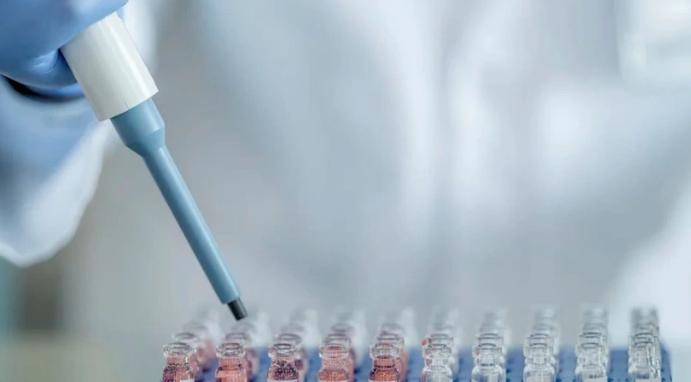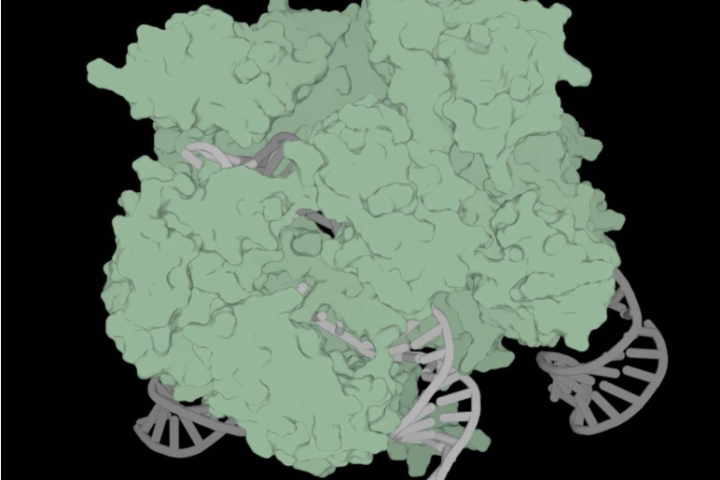The increasing use of artificial intelligence in research and development accelerates the discovery and development of new medicines and leads to significant advances in treatment methods. This innovation is driving big pharma companies to more effective and efficient ways of working and demonstrates the growing role of AI in the healthcare industry.
Twenty-first century industry leaders are striving to integrate artificial intelligence (AI) into every corner of our world. But while AI is unlikely to be successful in every area, there is one area where it could be really useful, speeding up processes that can take decades, such as designing, finding and testing new medicines.
- Huawei shocked the US! The best-selling phone brands have been announced
- Infinix Smart 8 Pro surprises with features despite its low price
It is quite common for a new drug project to face the risk of failure. Each drug project requires between three and five years to generate a hypothesis sufficient to start laboratory testing. According to a 2022 study by Professor Duxin Sun, 90% of clinical drug development processes end in failure, costing each project more than $2 billion. This figure does not even include compounds that are found not to work at the preclinical stage. In other words, every successful drug has to support at least $18 billion of waste generated by its failed “siblings”. This is a factor preventing a focus on less profitable treatments for rare diseases.
Dr. Nicola Richmond, head of artificial intelligence at Benevolent, explains that in the classical system, researchers must first find a protein that causes the disease, then find a molecule that corrects this protein. Once a molecule is found, it needs to be translated into a form that can be taken by the patient and tested to be both safe and effective. It takes years to get to clinical trials and human testing, and it is often at this stage that it becomes clear that what works in theory doesn’t work in practice.
Dr. Chris Gibson, co-founder of Recursion, notes that the current process requires more than a decade and billions of dollars of research investment for each approved drug. According to Gibson, the great skill of AI could help researchers avoid wasting too much time in blind spots and move on to other targets by ensuring that a software platform that can evaluate hundreds of options simultaneously fails early and quickly.
Artificial intelligence will now make medicine! So what’s next?
Dr. Anne E. Carpenter is the founder of the Carpenter-Singh lab at MIT and Harvard’s Broad Institute. For more than a decade, she has worked on the Cell Staining technique, which highlights elements in cells with dyes, making them computer-readable. He is also one of the developers of the Cell Profile, which provides a way to analyze large data pools of images of these stained cells with AI. Together, this work makes it easier for a machine to see how cells change in the presence of disease or under the influence of a treatment. And looking holistically at every part of the cell in the discipline known as “omics” offers more opportunities to make connections that AI systems are on top of.
Using pictures to identify potential treatments might seem a bit unorthodox, given that what is seen does not always reflect the actual condition, right? Carpenter said that people have always made subconscious assumptions about medical conditions just by seeing them. He explained that most people can conclude from looking at someone’s face that they might have a chromosomal problem. In his experience, professional clinicians can also recognize many disorders by sight alone. Carpenter added that when you take a picture of everyone’s face in a given population, a computer can recognize their layout and patterns based on common features.
This logic can be applied to images of cells from healthy and diseased samples. If a human can do this, it should be faster and easier for a computer to detect these differences at scale and with accuracy. “You let this data sort itself into groups and now you start to see patterns,” he said. “When we treat cells one by one with 100,000 different compounds, we can say ‘here are two chemicals that are very similar’.” And this similarity seems to be not just a coincidence, but a clear indication of their behavior.
In one example, Carpenter noted that two different compounds could produce similar effects in a cell and therefore be used to treat the same condition. If so, one of the two compounds – which may not have been designed for that purpose – may have less harmful side effects. Then there is the potential to be able to identify something we didn’t know was affected by the disease. “It allows us to say, ‘look, there’s this cluster of five genes that are very well known in this pathway, but we didn’t know what the sixth one did, now we have a strong clue that it’s involved in the same biological process. Maybe the other five genes, for some reason, are not suitable as direct targets, maybe the chemicals don’t bind,” he said, “but the sixth gene could be really perfect for that.”
AI technologies are increasingly finding their way into drug discovery processes that seek solutions to the most complex problems of modern medicine. For example, companies like BenevolentAI start by formulating a biological question about a specific disease. Let’s say the team wants to explore ways to treat ALS by improving or correcting the cell’s own cleaning system. While this is a purely fictional example, it gives an idea of how the process works.
These questions are addressed and evaluated by BenevolentAI’s artificial intelligence models, pulling information from a large pool of data sources. The model provides potential answers to these questions, which could include new compounds or ways in which existing medicines can be adapted. The resulting data is then reviewed by a researcher, who decides how much weight to give to the findings. The model has to provide evidence from existing literature or sources to support its recommendations, even if the recommendations are unexpected. People always have the last word and they decide which conclusions to follow.
Recursion is moving in a similar direction. Dr. Gibson says the company’s model is now “capable of predicting how any drug will interact with any disease without the need to physically test it.” The model has already generated three trillion predictions based on absorbed and simulated data. When researchers sit at a terminal and type in a gene associated with breast cancer, for example, other genes and compounds that the system believes are associated with it are listed.
What’s really exciting is when a gene appears on the lists that no one has heard of before, and it feels like a new field of biology that the world didn’t know existed. Once a target has been set and the findings have been checked by humans, the data is transferred to Recursion’s own internal lab. Here, the first experiments are carried out to see if what is found in the simulation can be replicated in the real world. According to Dr. Gibson, the company’s largely automated wet lab can run more than two million experiments in a working week.
After about six weeks, with very little human intervention, the results are in, and if successful, the company actually starts to invest. The initial short validation run costs the company very little money and time. It promises to compress a three-year preclinical phase into a few database searches, some surveillance and then a few weeks of ex vivo testing to confirm whether the system hypotheses are really worth investigating.
There are no concrete success stories yet that validate this approach. But Recursion can cite real-world examples that show how close its platform has come to the success of a critical study. In April 2020, it ran the COVID-19 sequence through its system, vetting potential treatments. It examined both FDA-approved drugs and candidates in late-stage clinical trials. The system generated nine potential candidates that required further analysis, eight of which were later proven correct. It also indicated that Hydroxychloroquine and Ivermectin, which were much talked about in the earliest days of the pandemic, would fail.
There are AI-powered medicines currently in real-world clinical trials. Recursion points to five projects currently nearing completion of phase one (tests in healthy patients) trials or entering phase two (trials in people with investigated rare diseases) clinical testing. Benevolent has started a phase one trial for the treatment of ulcerative colitis, which could also help other inflammatory bowel diseases. And if successful, it will add weight to the idea that AI can spot connections that humans miss.
There are many questions about how reliable AI technologies are as the sole determining force in the drug discovery process, including the quality of the training data and biases in general sources. Dr. Richmond highlights problems with bias in genetic data sources, both in terms of the homogeneity of cell cultures and how these tests are conducted.
Similarly, Dr. Carpenter says that the results of his most recent project, the public JUMP-Cell Painting project, were based on cells from a single participant. In an ideal world, he would like to have a much wider range of participants and cell types, but the current problems revolve around funding and time, or rather, the lack thereof.
For now, there is not much we can do other than wait and hope for the results of these early trials. Like potential applications of AI, its value will largely depend on its ability to improve the quality of work or, more likely, its ability to improve the bottom line for the business. But if AI can deliver sufficiently attractive savings, even diseases that are unlikely to deliver a return on investment under the current system may find a chance. This could result in a hype boom or offer real hope to families struggling with rare diseases.





